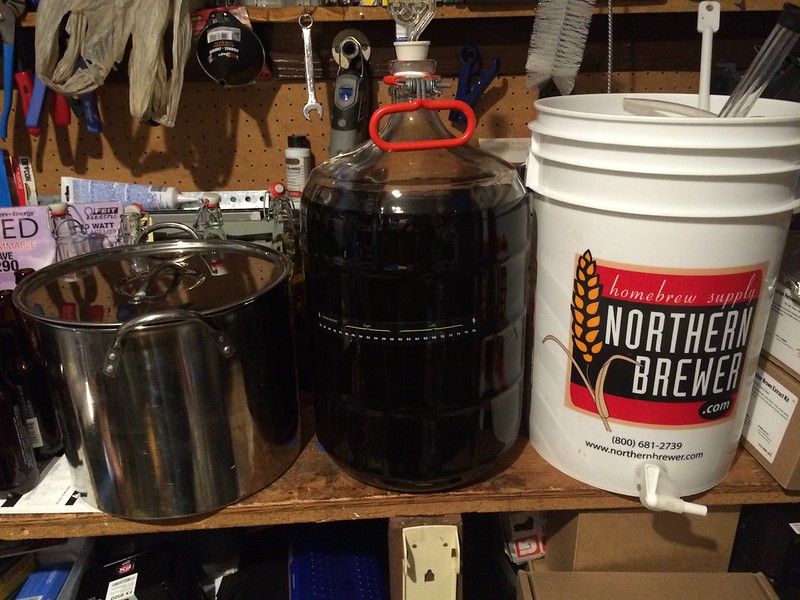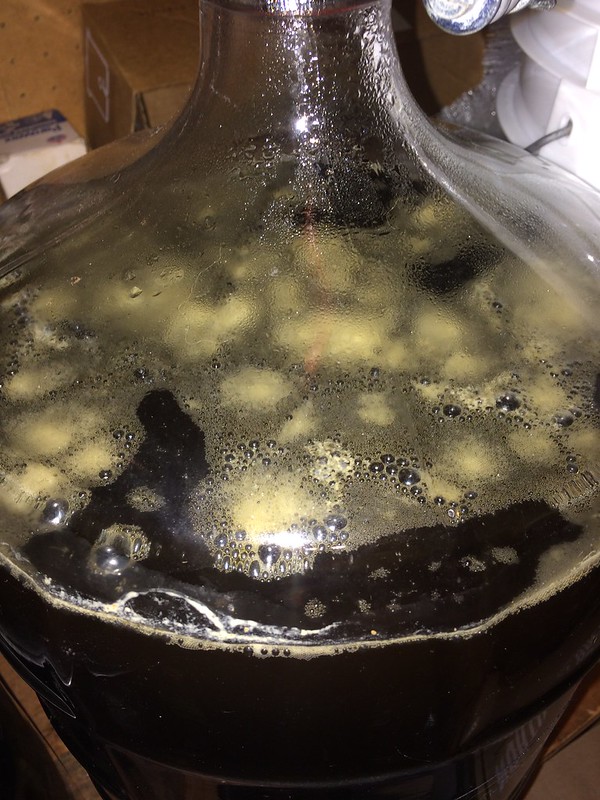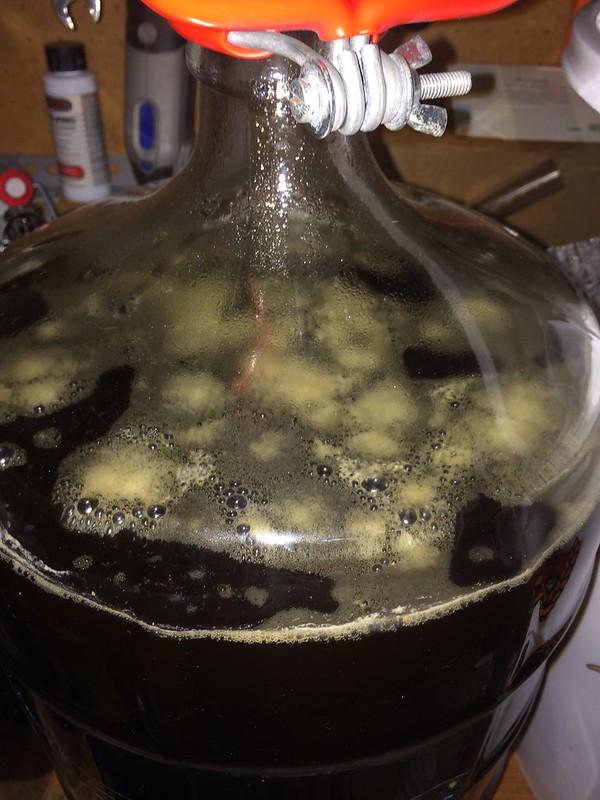jeremybwilson
Well-Known Member
So I've got a batch of Caribou Slobber, now about 14 days in the secondary fermenter with what appears to be a very slight slimy foam/bubbles on the surface and a relatively constant release through the airlock every 30-45 seconds.
I was not particularly concerned about this until about 3 days ago when, in addition to a new very mild layer of bubbles on the top, I began to notice said activity in the airlock. I assume based on reading other thread that this is CO2 being released again, however it comes after nearly a good 10 days of no 'visible' activity from the secondary.
Here are some pictures to document the before and after...
All is well after more than a week in the secondary fermenter:

Then, as of 3 days ago, sudden airlock activity and signs of infection(?):


I scoured the forums last week and the larger "post your infection/infected?/dump it?" stickies for information and answers to my own questions and still don't know what to do.
Whatever it is that is going on in my beer it really appears relatively minor. And if it is an infection, right now the beer still tastes great and has no off taste that I can ascertain.
So the questions are as follows:
1. Infected or maybe just some late yeast activity? I realize the pictures aren't great but I could not really get a good view through the condensation at the top.
2. With semi-active CO2 activity through the airlock still, am I running the risk of creating bottle bombs by bottling? I have a keg but no CO2 in the cannister. Should I keg it now instead of bottling? Is kegging even an option?
3. Does an infection, with no sour or off taste as of yet, ever result in a "dump it" verdict.
I was not particularly concerned about this until about 3 days ago when, in addition to a new very mild layer of bubbles on the top, I began to notice said activity in the airlock. I assume based on reading other thread that this is CO2 being released again, however it comes after nearly a good 10 days of no 'visible' activity from the secondary.
Here are some pictures to document the before and after...
All is well after more than a week in the secondary fermenter:

Then, as of 3 days ago, sudden airlock activity and signs of infection(?):


I scoured the forums last week and the larger "post your infection/infected?/dump it?" stickies for information and answers to my own questions and still don't know what to do.
Whatever it is that is going on in my beer it really appears relatively minor. And if it is an infection, right now the beer still tastes great and has no off taste that I can ascertain.
So the questions are as follows:
1. Infected or maybe just some late yeast activity? I realize the pictures aren't great but I could not really get a good view through the condensation at the top.
2. With semi-active CO2 activity through the airlock still, am I running the risk of creating bottle bombs by bottling? I have a keg but no CO2 in the cannister. Should I keg it now instead of bottling? Is kegging even an option?
3. Does an infection, with no sour or off taste as of yet, ever result in a "dump it" verdict.


